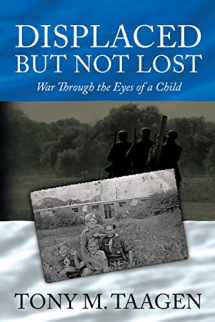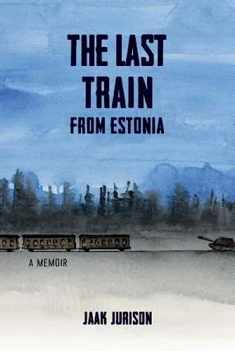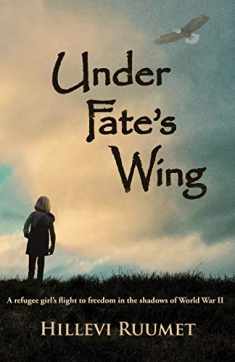
Displaced But Not Lost: War Through The Eyes Of A Child: War Through the Eyes of a Child
Book details
Summary
Description
This is a true story of how war changes a life. The author, as a young boy, leads a privileged life in Viljandi, Estonia. His father is a bank president, his mother is beautiful, his younger sister is no problem. Boring school is his only problem, until the turmoil of war intervenes. This is a memoir which takes place during World War II, but it could, in truth, be any war. This work of nonfiction contrasting rural and urban life (pig manure for antibiotics; sleighs for autos), flows like a novel reminiscent of such great 20th century novelists as Mark Twain, John Steinbeck, Ernest Hemingway, and Erich Maria Remarque, keeping readers’ attention from beginning to end. Some of the short chapters stand alone like poetry in the style of Charles Bukowski, and the longer chapters could stand alone as novellas. The actions of the unforgettable characters; for instance, the one-legged accordion player and Maxim, the Russian prisoner, sustain a clarity and vividness throughout; provided, in part, by stage-like directions. For example, Chapter 1 takes place in 1999, and sets the scene for what is to follow: “Thus, we sail on through the Swedish Archipelago, over the Baltic Sea, and into Tallinn Harbor, with the red roofs of the Old City shining before us, at last. My sister and I stand shoulder to shoulder at the rail. Remembering.” And in a later chapter this scene takes place: “I see a woman wipe her eyes with the back of her hand. I suddenly see a coffin, made of white boards. It is partially hidden by bags of belongings placed over it. My mother is seated on the floor of the truck with my sister cradled in her arms... A woman has noticed my problem. She suddenly points at me and speaks to the people huddled on the floor. She says, ‘Let’s put the boy in the coffin.’ Some of the people laugh. The woman lifts the cover of the coffin with great difficulty, because of the bags on top, and says, ‘There’s no one in it, and it would be warm.’” This gripping coming-of-age story of the family’s struggle to survive amid horror, monotony, uncertainty, and hunger imposed by war, is told by the reluctant schoolboy in the vernacular reflecting his age and European background. It is a unique mix of history, culture, philosophy, humor, and reflection, told-- “Through the eyes of a child”-- from early childhood to age fifteen. The maps, photographs of the period, and factual accuracy will be welcomed by ethnographers and historians, as well as by those seeking an adventurous read. Readers will be able to recognize themselves in the young narrator, especially those who have ever wished to see their schooling suspended as a bonus of war. This is the poignant—“I look at my grandmother…She is crying…I run to her, and she drops to her knees and embraces me with both arms. I feel tears running down my face. I embrace her, and suddenly realize”— and colorful story of the quietly observant, curious young narrator who must leave childhood behind during wartime and is shaped by war, but not scarred by it. It is a reminder that children are astute and capable of observation, analysis, and reaction—especially under conditions of survival and deprivation. This scene from a gasthaus in Germany is telling: “The woman then goes into an adjoining room, and returns with two bottles. My father hands her a stack of paper money, which she places in her apron pocket…my father tells me that the woman was kind to sell us some wine. He also tells us she has a son on the Eastern Front, but has not heard from him for several weeks. It seems the Eastern Front turns strangers into persons who are united. Over the past few months, this feeling has become more and more evident to me, as time goes on and the Front itself is getting closer and closer.” This is a literary memoir, a nonfiction novel, a true story of adventure, a good read told by a narrator too young for military service, but old enough to clearly remember the journey from Estonia, to Germany, to Texas.


We would LOVE it if you could help us and other readers by reviewing the book
Book review





